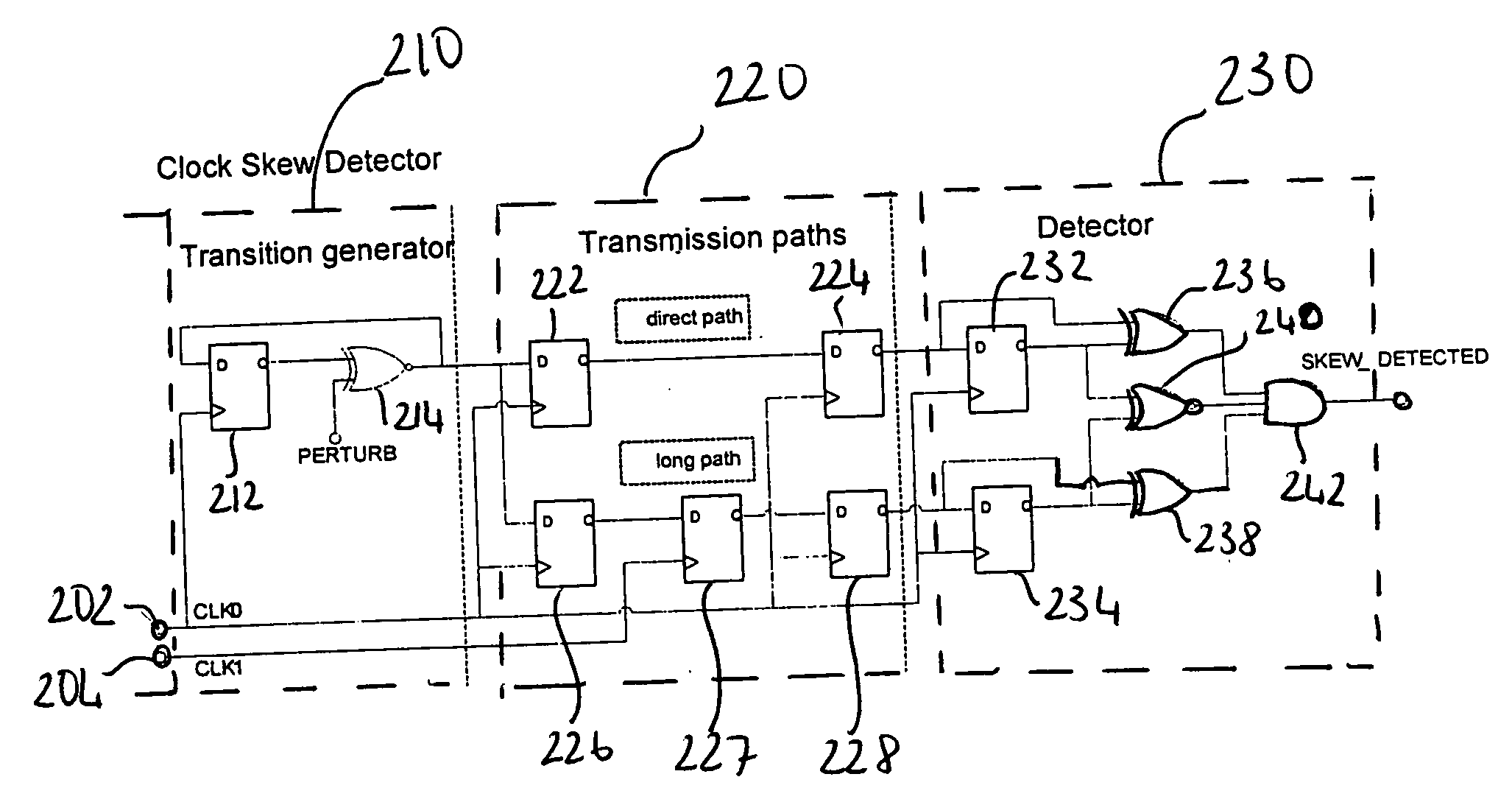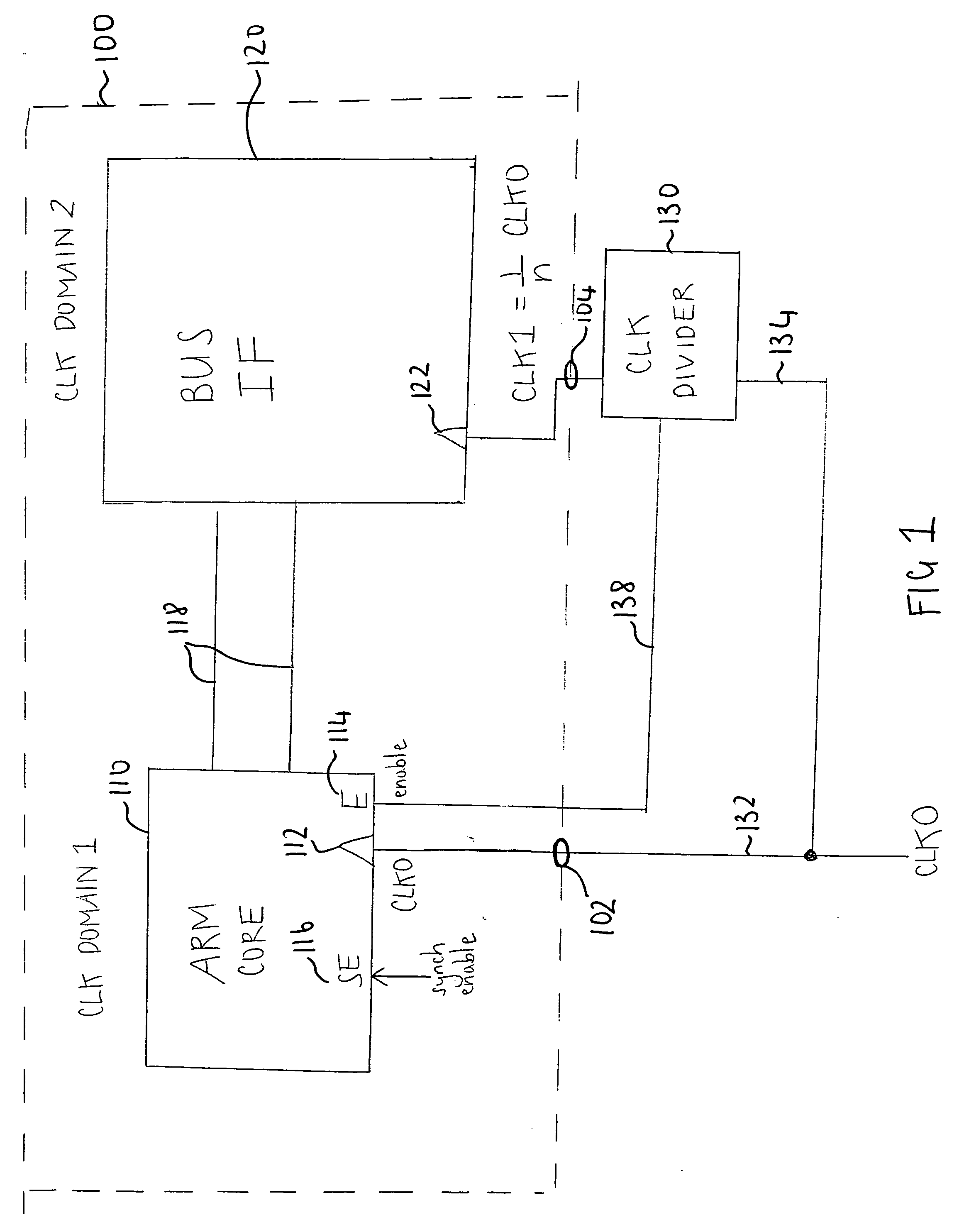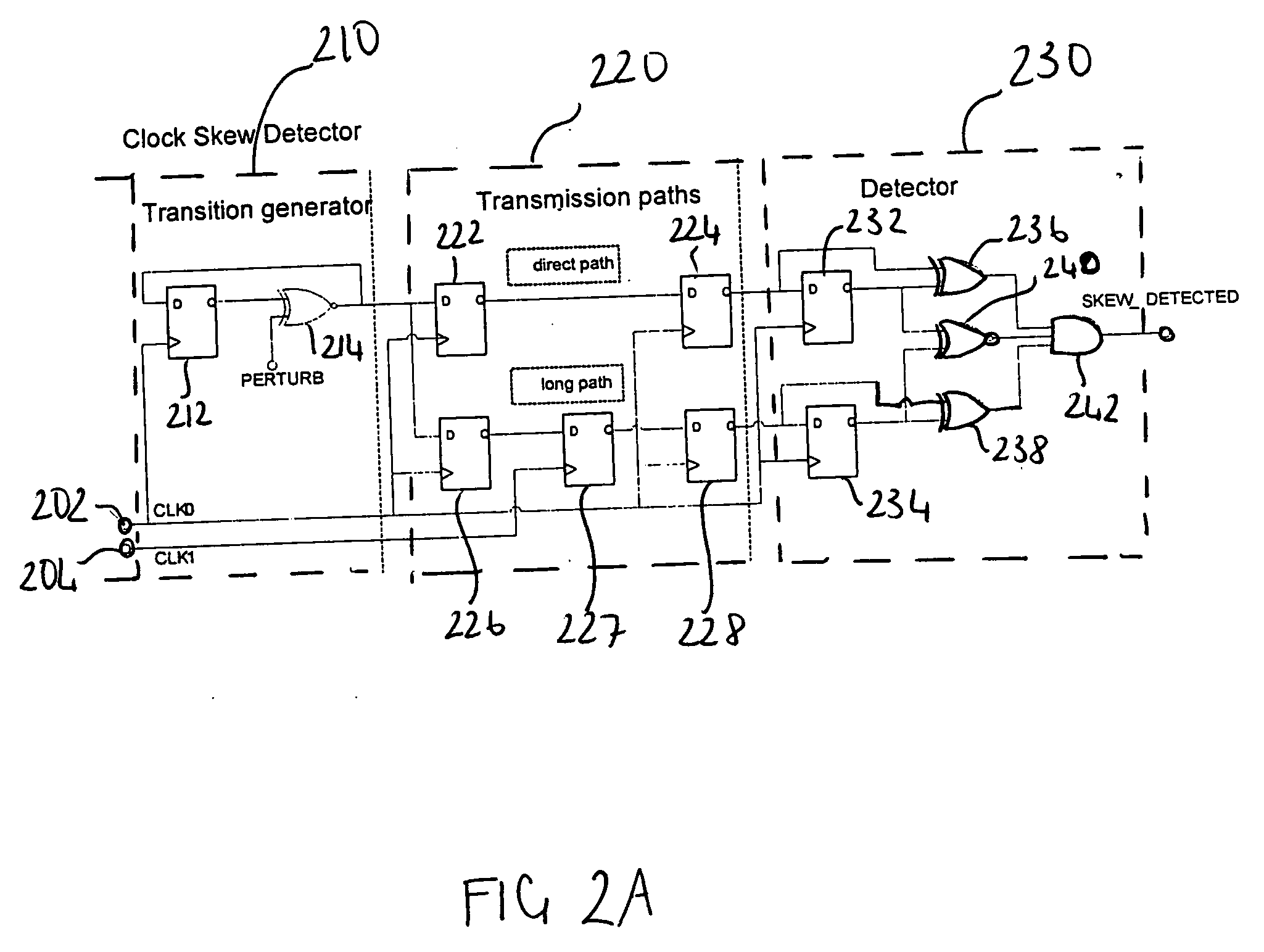System for checking clock-signal correspondence
- Summary
- Abstract
- Description
- Claims
- Application Information
AI Technical Summary
Benefits of technology
Problems solved by technology
Method used
Image
Examples
Embodiment Construction
[0102]FIG. 1 schematically illustrates a programmable logic device having more than one clock domain. The system comprises a programmable logic device having an ARM processor core 110 and a bus interface circuit 120 and a clock divider 130, which is situated externally to the programmable logic device. The ARM core 110 and the bus interface 120 communicate via a pair of signal lines 118.
[0103] The ARM core 110 has a clock signal input 112, an enable input 114 and a synchronisation (sync) enable input 116. A reference clock signal CLK0 is supplied directly to the clock signal input 112 of the ARM core via a signal line 132. CLK0 is also supplied to the clock divider 130 via the signal line 134. The external clock divider 130 reduces the frequency of the reference clock signal CLK0 (divides frequency by a non-zero integer) and outputs a further (lower frequency) clock signal CLK1 via the signal line 104 to the clock input 122 of the bus interface 120. Thus the ARM core 110 is clocked...
PUM
 Login to View More
Login to View More Abstract
Description
Claims
Application Information
 Login to View More
Login to View More - R&D
- Intellectual Property
- Life Sciences
- Materials
- Tech Scout
- Unparalleled Data Quality
- Higher Quality Content
- 60% Fewer Hallucinations
Browse by: Latest US Patents, China's latest patents, Technical Efficacy Thesaurus, Application Domain, Technology Topic, Popular Technical Reports.
© 2025 PatSnap. All rights reserved.Legal|Privacy policy|Modern Slavery Act Transparency Statement|Sitemap|About US| Contact US: help@patsnap.com



